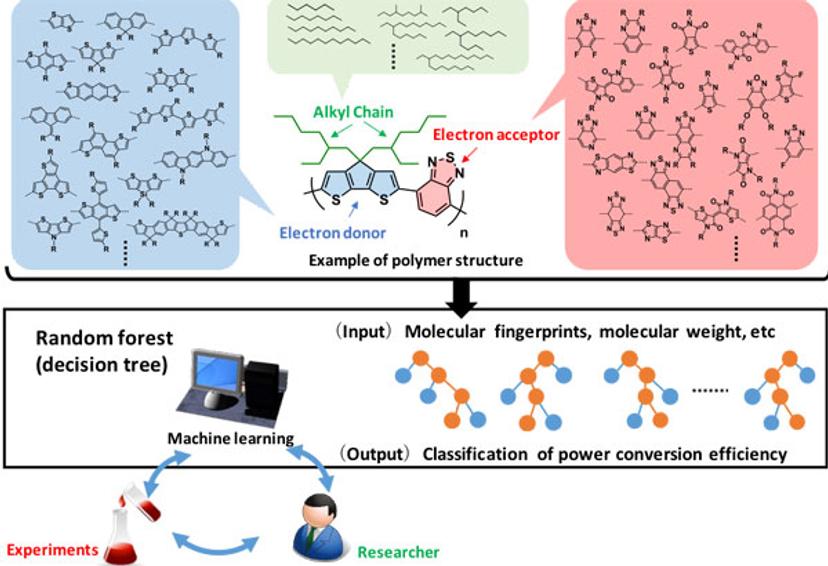AI Software Assists Design of New Material for Solar Cells
Osaka University researchers design organic photovoltaic polymer using machine learning
4 Jun 2018
Solar cells will play a key role in shifting to a renewable economy. Organic photovoltaics (OPVs) are a promising class of solar cells, based on a light-absorbing organic molecule combined with a semiconducting polymer. OPVs are made from inexpensive, lightweight materials, and benefit from good safety as well as easy production. However, their power conversion efficiencies (PCEs) – the ability to convert light into electricity – are still too low for full-scale commercialization.The PCE depends on both the organic and the polymer layer.

Traditionally, chemists have experimented with different combinations of these by trial-and-error, leading to a lot of wasted time and effort. Now, a team of Osaka University researchers has used computer power to automate the search for well-matched solar materials. In the future, this could lead to vastly more efficient devices. The study was reported in The Journal of Physical Chemistry Letters.
“The choice of polymer affects several properties, like short-circuit current, that directly determine the PCE,” study first author Shinji Nagasawa explains. “However, there’s no easy way to design polymers with improved properties. Traditional chemical knowledge isn’t enough. Instead, we used artificial intelligence to guide the design process.”
Informatics can make sense of large, complex datasets by detecting statistical trends that elude human experts. The team gathered data on 1,200 OPVs from around 500 studies. Using Random Forest machine learning, they built a model combining the band gap, molecular weight, and chemical structure of these previous OPVs, together with their PCE, to predict the efficiency of potential new devices.
Random Forest uncovered an improved correlation between the properties of the materials and their actual performance in OPVs. To exploit this, the model was used to automatically “screen” prospective polymers for their theoretical PCE. The list of top candidates was then whittled down based on chemical intuition about what can be synthesized in practice.
This strategy led the team to create a new, previously untested polymer. In the event, a practical OPV based on this first try proved less efficient than expected. However, the model provided useful insights into the structure–property relationship. Its predictions could be improved by including more data, such as the polymers’ solubility in water, or the regularity of their backbone.
“Machine learning could hugely accelerate solar cell development, since it instantaneously predicts results that would take months in the lab,” co-author Akinori Saeki says. “It’s not a straightforward replacement for the human factor – but it could provide crucial support when molecular designers have to choose which pathways to explore.”
